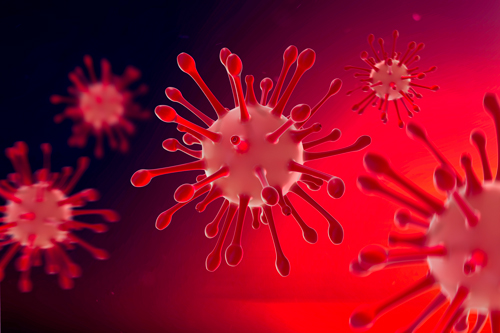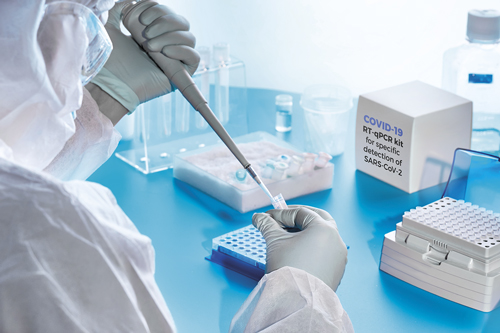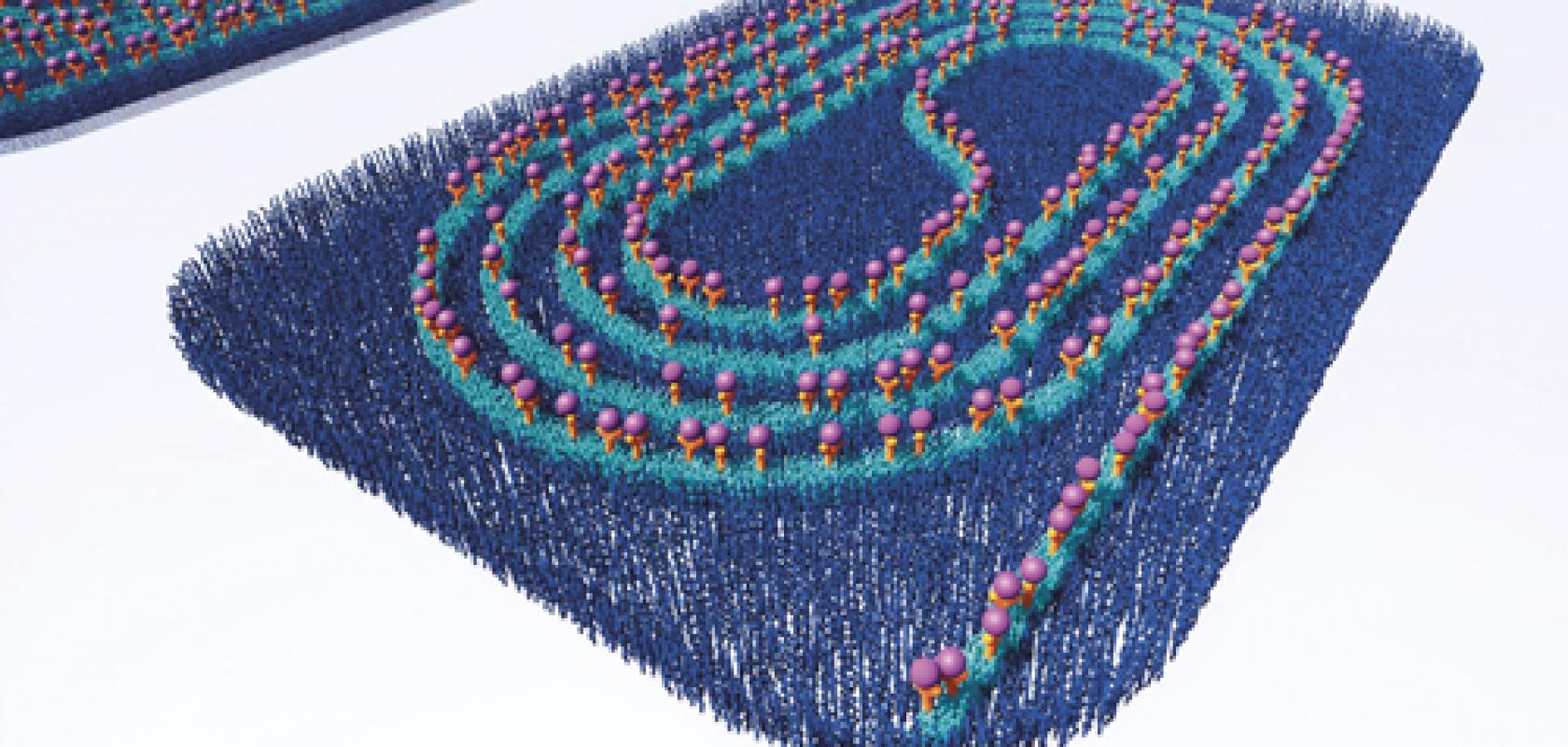Today’s clinical techniques generally involve sampling undertaken by specialist personnel, followed by sample transport to a laboratory, and the use of often be time-consuming processes that can delay diagnosis.
This is prevalent in the current and still ongoing covid-19 crisis, clearly demonstrating a need for cost-effective, real-time and user-friendly detection methods that are able to provide a fast diagnosis.
In a recent webcast hosted by Electro Optics, and supported by the Pixapp European pilot line and Pix4Life project, members of the European Photonics Industry Consortium (Epic), discussed some alternatives, as well as European capabilities for the development of photonic integrated circuit (PIC) biosensors for virus detection. This included chip design, fabrication, packaging and bio-functionalisation of the sensor surface.
Take your PIC
Inigo Artundo, CEO at VLC Photonics and representative of Pix4Life, talked about the advantages of using PIC technology for this particular use: ‘PICs have many applications. But the very classic example is a laser combination system, where we combine different light sources. Traditionally, you would do this by combining different discrete components, but this is quite bulky, and requires precise alignment of the different components and so on. Nowadays, this could be integrated into a small microchip on the wafer level, and this PIC technology allows the miniaturisation of this complete optical system into a microchip.’
The advantages of PIC technology, said Artundo, include a reduction in both volume and weight. ‘This is pretty obvious and could be critical in medical instrumentation,’ he said. It also enables large and complex optical circuits, improves mechanical and thermal stability, allows production to be scaled up, and simplifies optical assembly and packaging, thereby reducing.
When it comes to virus protection in particular, Artundo explained, antibodies are a key element. ‘Antibodies are generated in our bodies, into our bloodstream,’ he said. ‘These are selective, depending on the intruder, and are known as an antigen. Obviously, if you need to diagnose an infection, you must have measurement of the concentration of these antibodies. This is very low if you compare it to the other molecules that are in the bloodstream. It theredore requires a way of having transducer – a photonics transducer in our case – that is able to fix the antigen onto a biosensor surface.’
Full transparency
By fixing an antigen on a biosensor surface, the attachment of antibodies can be measured with high sensitivity. Artundo demonstrated a number of examples using silicon nitride as the platform. ‘As you know,’ he said, ‘the most common material platform is silicon, but in photonics there are different material platforms, and we are only looking here at silicon nitride because it is transparent in our wavelength range of interest.’
The first demonstration using silicon was to detect tuberculosis for point of care applications as part of the Pocket Project initiative, designed to contribute to the healing of collective and intergenerational trauma, and reduce its disruptive effects. The chip was in the middle of a microfluidic cavity, coming from a wafer. It works via a visible light being shined onto the chip, and in doing so, enables the concentration of the antigens and the antibodies to be measured.
The next example, a project undertaken in partnership with Bosch, was a gas and bio multisensor. ‘You can combine these,’ said Artundo, ‘not only to measure molecules, but also all kinds of parameters. For example, temperature – because the transmission of light in the waveguide is also dependent on the temperature. This allows us to have different sensors for different things – different viruses, different bacteria – in the microchip.’
These types of application also have commercial examples. One detailed by Artundo is being done by Lumensia Sensors, a company based in Valencia, which is working on silicon nitride photonic sensing systems. ‘They have been trialling their system on swine viral diseases,’ he explained, ‘and have already published a paper on this. There is also a company in the States called Genalyte that is using silicon photonics for biosensing. Specifically they have been developing the “Maverick” system for covid-19.’
Access all areas
In terms of how the Pix4Life pilot line can advance the commercialisation of such solutions, Artundo highlighted the open access manufacturing platform available to develop these types of photonic circuits. ‘It means that we can provide the complete supply chain from consultancy, design, manufacturing, testing and packaging,’ he said.
Demonstrating how different organisations within the supply chain can work together to bring such solutions to market, Arne Leinse, CEO at LioniX International, revealed a collaboration between itself, Qurin Diagnostics and Surfix to show how any kind of biosensor for virus detection can be built using PICs.
LioniX was responsible for chip production, while Surfix provided surface selective coating; Qurin and Surfix the bio-functionalisation; and Qurin and NYtor the biomolecular detection.
The developed platform is called ‘TriPlex’, which comes fromit’s three layers of silicon nitride, oxide, and nitride respectivly. ‘The unique selling points of silicon nitride are two-fold,’ continued Leinse. ‘Firstly it has low optical attenuation. Secondly, very importantly for sensors, it’s also transparent in visible light, which is very suitable for a lot of applications.’
This platform also benefits from small bend radii for a small footprint, design-by-geometry and is silicon and glass-compatible.
It makes good sense
Optofluidic sensing offers three types of sensing in evanescent field-based sensing types. ‘The easiest sensing is absorption,’ Leinse explained, ‘looking at how much light is absorbed (scattered) by the fluid. The second is fluorescent sensing, where fluorescent light is captured by waveguides through the use of dye excitation. Once you’re on-chip, that’s the nice thing, the world is your oyster. You can easily filter out components, something that is normally difficult to do.’
Last is refraction. ‘This is the most interesting for virus detection,’ stated Leinse. ‘The downside of fluorescent sensing is that you have to prep your sample. Not every virus, not every sample you want to measure, is showing fluorescence. But the moment you can do something label-free, where you put the selectivity on the chip, and just measure whether that certain component – either a cancer cell or a virus – is present in your sample, that’s the main focus of these kinds of detection systems. For those, you want to look at refractive index sensing the change of something happening on your interface.’
The most sensitive building block, he continued, is the Asymmetrical Mach–Zehnder Interferometer (aMZI). By utilising this, more sensitive sensors can be generated, and therefore, sensitivity can be increased in detecting individual biomaterials.
Returning to the collaborative example, Leinse detailed that the waveguide makes up less than one per cent of the sensor’s surface, and butanalytes can only be detected on this small sensing element. ‘If I were to coat that with some kind of chemistry,’ he said, ‘the molecules adhere almost anywhere. In this case, most analyte molecules bind to bio-receptors that are not on the waveguide, and thus remain undetected.’
Coat of arms
In contrast, the use of Surfix’s material-selective nano-coating greatly increases detection efficiency and sensitivity, using a composition of nitride and oxide. ‘First, the waveguide is functionalised with a base layer that will later be used for bio-functionalisation,’ said Leinse. ‘Then, an anti-fouling layer is applied to the surrounding area, preventing non-specific adsorption. In the next step, bio-receptors are attached to the waveguide, enabling detection of the specific analyte of interest. The analyte binds to the bio-receptors on the waveguide, resulting in a change of the sensor output signal.’
By concentrating the analytes on the waveguide in this way, material-selective surface modification improves the sensitivity of the sensor. ‘It’s not just about the chip,’ reasoned Leinse, ‘it’s about the complete system.’
The next step is virus detection, including identification of a specific bio-recognition element for viral RNA detection, or whole-virus detection based on membrane proteins or ligands. Then comes preparation of the universal bio sensor according to standard process, and the verification and validation of sensor system for medical diagnosis.
‘That’s the next step also for covid-19.’ concluded Leinse. ‘We are doing everything now to see how we can get that done in the very near future. The devices are there. The PIC platforms are there. They are there to already start testing immediately. The trick with biochemistry, I was told, is that it is not rocket science, it is engineering. Just match them to the right RNA type of the virus. In the future it is also compatible for volume production with VCSEL and detector integration.’
Package deal
In terms of the challenges facing this type of product development, Padraic Morrissey, technology manager at the Pixapp pilot line and research manager at the Tyndall National Institute, raised the issue of packaging costs.
‘Photonic integration allows us to integrate multiple photonic functions onto a single chip in a compact, cheap and functional way,’ he said. ‘We take those PICs and pack them into modules that are easy to use, easy to handle, and can be integrated into those larger systems. However, the time, effort and cost associated with the design and manufacturing of PICs is quite high when we consider that the cost of the photonic product only accounts for about 20 per cent. So 50 per cent of the cost actually goes to packaging and assembly and over 80 per cent is for the packaging, assembly and also testing.’
Morrissey believes that the expense is due to operational challenges, including a fragmented ecosystem, barriers to user access and a lack of standards. There are also associated technology challenges such as thermal sensitivity, hybrid integration, and alignment tolerances. ‘There can be a bottleneck in the production of PICs,’ he said, ‘so there are lots of different PICs being produced, and research being done, but not enough of them are actually going through into a packaged device that needs to be tested and then actually used in photonic systems. This is where the Pixapp pilot line comes in.’
Hitting the headlines
Pixapp is an open-access PIC assembly and packaging pilot line. The goal is to cover the full packaging supply chain, and one particular member has been making the news of late due to the covid-19 situation. Randox is well-known in the in-vitro diagnostics industry, developing diagnostic solutions for hospitals, clinical, research and molecular labs. The company produces the biosensors that actually detect covid-19 and is working with Pixapp to demonstrate a biosensor application.
‘We’ve developed these building blocks,’ explained Morrissey. ‘What we did a couple of years ago was design a series of reference PICs across different platforms. With these, we essentially replicated electrical, optical terminal mechanical interfaces and we used these test structures to develop and optimise our packaging processes, show how scalable they are and the minimum cost for each particular process. These have been designed, fabricated and validated.’
The biosensor demonstrator in conjunction with Randox is based on Imec’s silicon nitride platform, with the goal of making a proof-of-concept demonstration on Randox’s established drugs of abuse essay. Fluid delivery is via Microfluidic Chipshop’s polymer chips, with a replaceable chip in a solid external holder without active alignment. A consumable cartridge was created at less than €5 per unit.
A packaging assembly flow has already been developed that is compatible with biosensing and the biosensing capabilities using the cartridge have been demonstrated for the first time.
The next step is to assemble demonstrators for dissemination, provide access to users globally, and to speed up biosensor development.
Covid-19: The real-world applications of photonics equipment
Techniques such as PCR and medical imaging are vital in the fight against the coronavirus, and rely on the continued supply of components by manufacturers such as Hamamatsu Photonics
The novel coronavirus (Sars-Cov-2) continues to spread across the world, impacting everything from daily life to the global economy.
In these challenging times, the healthcare sector plays a particularly important role. In addition to protective clothing, respiratory masks and respirators, the ability to test rapidly and accurately is vital. However, rapid testing demands the availability of various laboratory analysers.
Meeting the demand for analytical instruments requires that manufacturers continue production, to ensure the continuous supply of critical components across the world. Hamamatsu Photonics is part of the supply chain for products and devices used in the fight against the virus. Our products are integrated into many laboratory analysers and we also work closely with point of care diagnostic manufacturers to develop new instrumentation for rapid testing.

But never forget: The safety and well-being of our employees is our top priority. We are monitoring the guidance of the World Health Organisation and other public health bodies closely, and are taking appropriate measures to provide our employees with a safe and healthy working environment.
How to fight the virus?
Researchers around the globe are striving to develop an effective vaccine against Sars-Cov-2, but this still requires time.
To combat the further spread of the coronavirus efficiently, immediate detection of the virus is of crucial importance. The aim is to reduce the chain of infection and thus the infection rate. But to identify who is and who is not infected requires as many tests as possible performed. Tedros Adhanom Ghebreyesus, head of the World Health Organisation (WHO), famously said during a press conference in March: ‘Test, test, test.’
Rapid tests and test analysers
To test thousands of people, thousands of rapid tests are required, which in turn calls for great numbers of analytical devices for their evaluation.
One common analysis method of these devices is the polymerase chain reaction (PCR). This method is widely used in molecular biology to multiply the patient’s DNA.
How does the PCR test work?
First, a smear is taken from the patient's mouth, nose or throat. This sample is then sent to a laboratory. Each virus can be identified by a specific characteristic section of its genetic material. However, the quantity of the genetic material from the smear must be multiplied in order for there to be sufficient material to determine whether the pathogen is present or not.
For this purpose, so-called thermocyclers are used, which initiate the polymerase chain reaction. In 30 to 50 cycles, the DNA is amplified exponentially.

If the pathogen is present in the sample, its genetic material will multiply and will be detected. If there is no genome of the pathogen, it will not go through the multiplication process and therefore not be detected.
Using a fluorescence dye, the amplification of the pathogen genome can be monitored in real time. This is called real-time PCR.
It usually takes several days before the patient receives the test result. To send the sample to the laboratory takes the longest time, the test itself takes up to five hours.
Hamamatsu Photonics has decades of expertise in the development and manufacture of optical technologies. Several manufacturers of laboratory devices choose Hamamatsu Photonics for products such as photomultiplier tubes (PMTs), photodiodes and cameras that allow the optical detection of the target DNA sequence. We are proud to supply our products to manufacturers of laboratory analysers all over the world that are contributing to fighting the virus.
Medical imaging as a further diagnostic tool
Severe cases of Covid-19 are associated with pneumonia, which can lead to changes in lung tissue.
As a further diagnostic tool of coronavirus, medical imaging techniques such as computed tomography (CT) and conventional radiography of the thorax are used. Changes of lung tissue are visible in the images obtained through these methods.
In some cases, the changes of lung tissue are already visible despite the test results of PCR being negative. However, a negative CT result does not mean the patient is negative for coronavirus. With computed tomography or thorax x-rays, the severity of the disease can be assessed and the clinical indication in severe cases monitored.
Compared to PCR, an advantage of medical imaging is that the results are available immediately. On the other hand, ionising radiation is used in CT and x-rays, so the health benefit for the patient must outweigh the radiation risk.
Hamamatsu Photonics’ contribution in the field of x-ray detection is apparent by a portfolio of suitable x-ray detectors, which it supplies to numerous medical equipment manufacturers around the globe.


